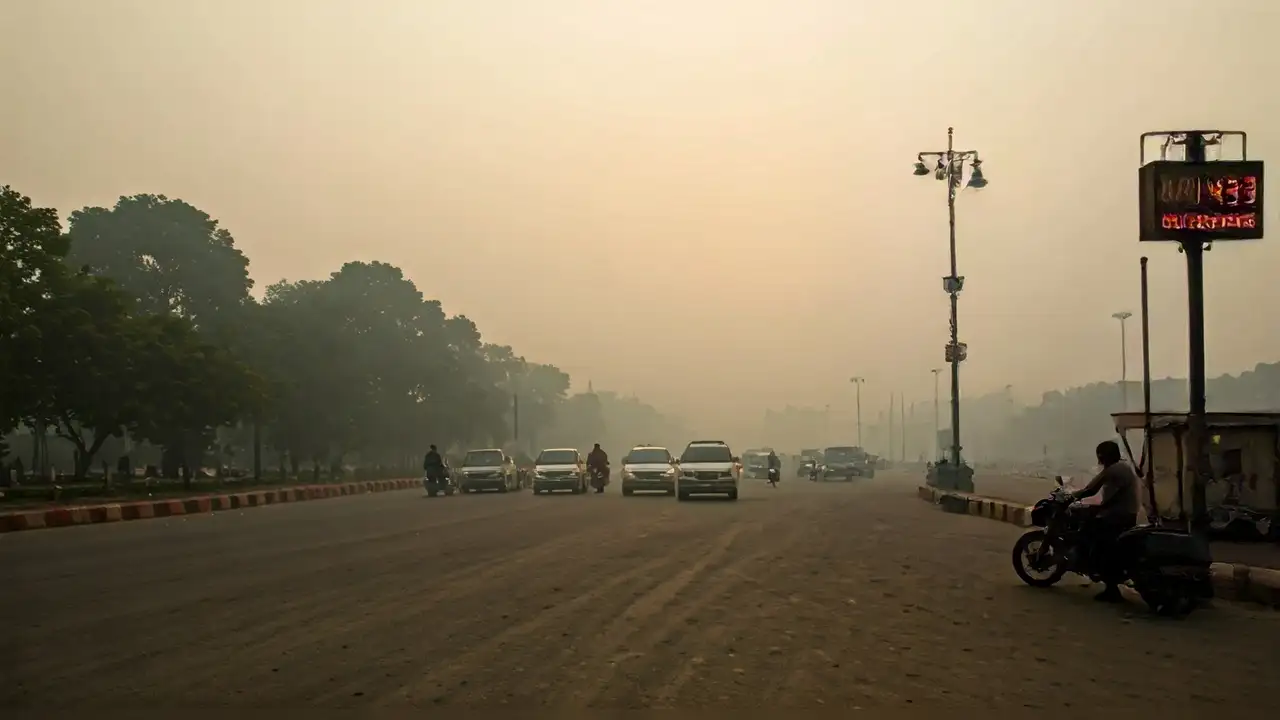Copyright timesnownews

Delhi: As temperatures continue to drop across northern India, a thick blanket of smog has once again returned to haunt cities. On Thursday morning, 40 Indian cities ranked among the world’s most polluted, with air quality dipping to alarming levels. While Delhi did not feature in the top 10 most polluted cities, it remained in the ‘severe’ category, with an Air Quality Index (AQI) of 433. Rajasthan and Haryana Dominate Pollution RankingsAccording to data from aqi.in reported in The Indian Express report, the world’s worst air quality on Thursday morning was recorded in Sri Ganganagar, Rajasthan, with an AQI of 840, placing it at the top of the global pollution list. The second-worst was Siwani, Haryana, with an AQI of 644. Other cities that made it to the top 10 include Abohar (634), Hisar (477), Churu (456), Charkhi Dadri (448), Rohtak (444), Nangli Bahrampur in Uttar Pradesh (438), Bhiwani (437), and Sasroli (433). Delhi, though slightly better compared to some northern cities, still ranked 13th globally — a grim reminder that the national capital continues to struggle under toxic skies. Here’s the list of top 10 most polluted cities in the world on Thursday, as per aqi.in data — all from India: Sri Ganganagar, Rajasthan – AQI: 840Siwani, Haryana – AQI: 644Abohar, Punjab – AQI: 634Hisar, Haryana – AQI: 477Churu, Rajasthan – AQI: 456Charkhi Dadri, Haryana – AQI: 448Rohtak, Haryana – AQI: 444Nangli Bahrampur, Uttar Pradesh – AQI: 438Bhiwani, Haryana – AQI: 437Sasroli, Haryana – AQI: 433 Artificial Rain Brings Little Relief Two days after the Delhi government’s artificial rain trial, the AQI in the capital showed little to no improvement, remaining well above the 400 mark. The experiment, conducted in partnership with IIT-Kanpur, was aimed at testing cloud-seeding technology to reduce pollution levels. However, environmental experts have expressed scepticism, calling it a “short-term measure” that might temporarily settle dust but fails to address the underlying causes — such as vehicular emissions, crop burning, and construction dust. ‘Severe’ Category and Its Health Impact The Air Quality Index classifies readings as: Good (0-50)Satisfactory (51-100)Moderately Polluted (101-200)Poor (201-300)Very Poor (301-400)Severe (401-500) Anything above 400 is considered hazardous to health, posing serious risks to people with respiratory conditions, children, and the elderly. Doctors have urged residents to limit outdoor exposure and use masks when stepping outside. Even as authorities try experimental solutions like artificial rain, experts emphasise that a long-term strategy, focusing on cleaner energy, stricter emission norms, and sustainable transport, is the only way to breathe easy. For now, the onset of winter has once again turned North India’s skyline grey, signalling another difficult pollution season ahead. Get Latest News Live on Times Now along with Breaking News and Top Headlines from Delhi and around the world.



